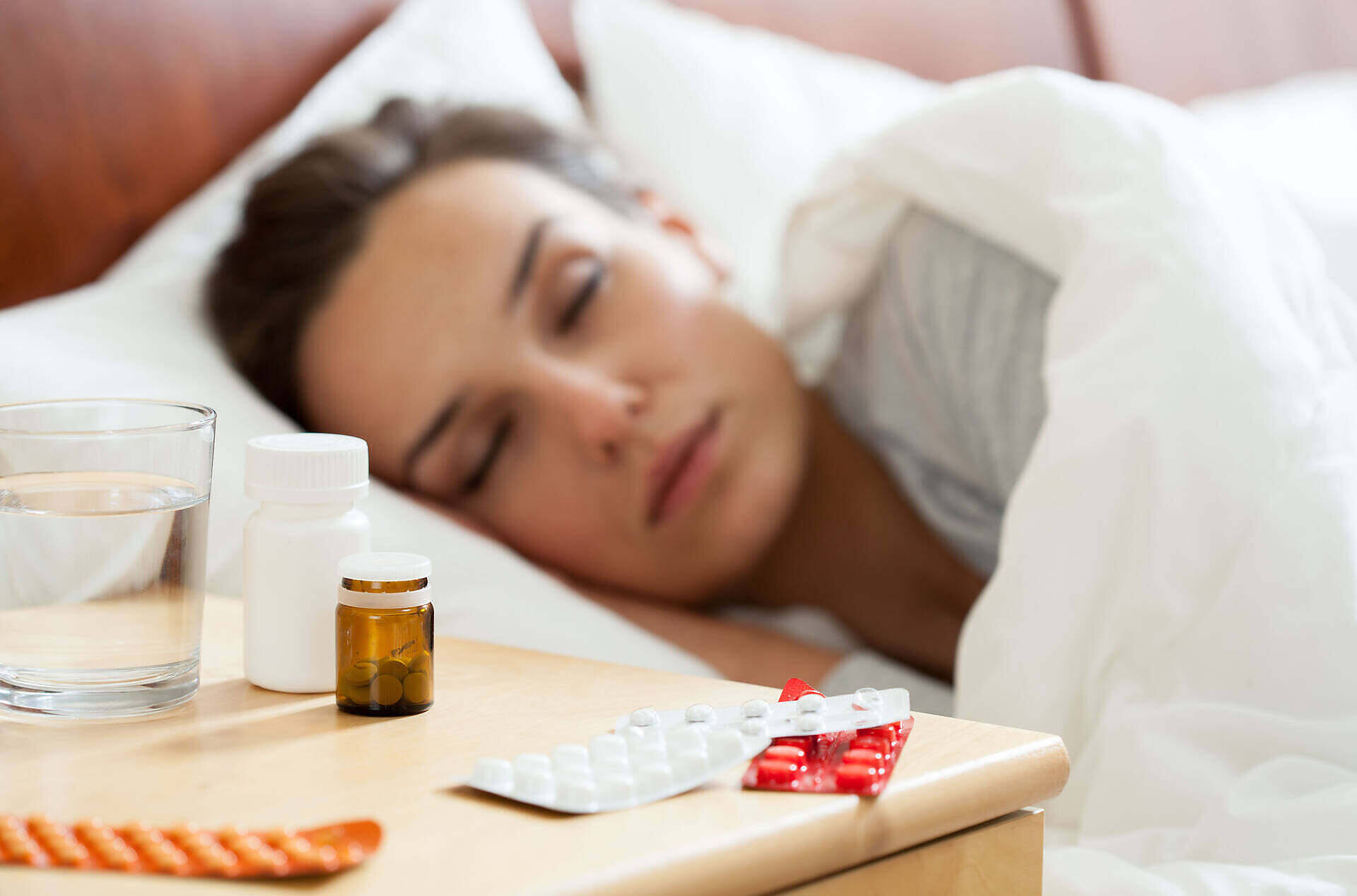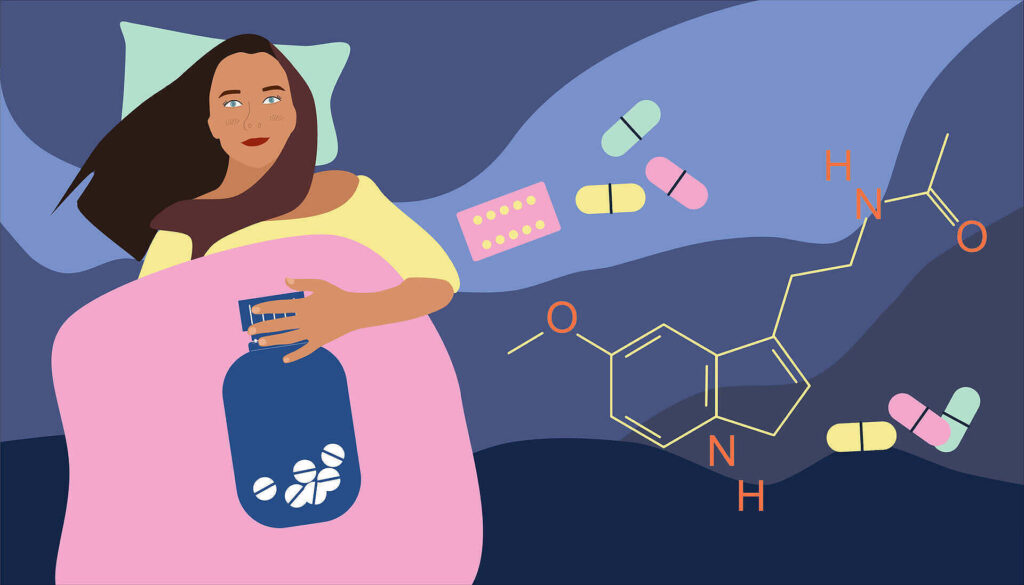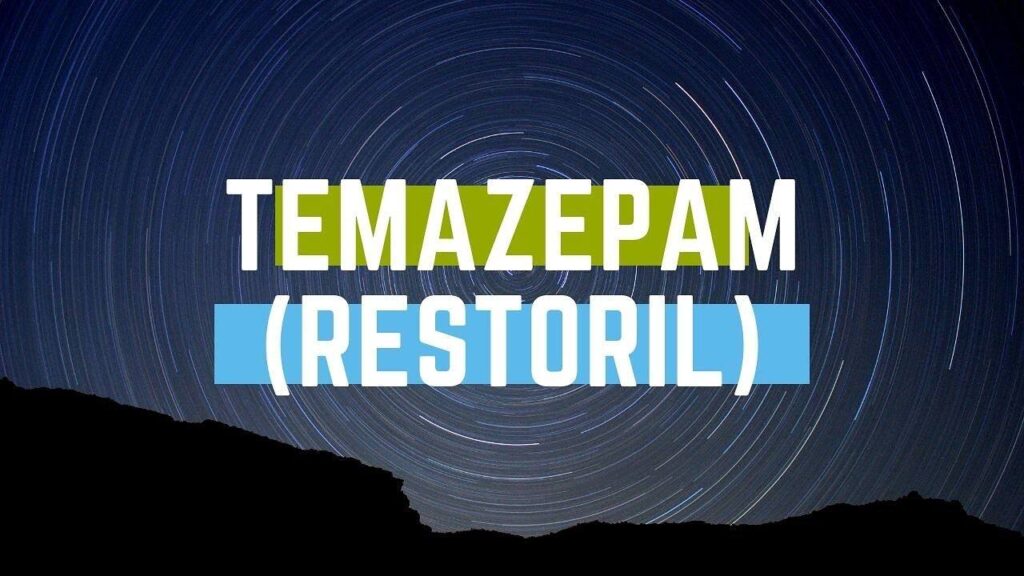Halcion is the brand name for the drug Triazolam, a potent benzodiazepine that can lead to dependence and addiction.
Primarily, Halcion is prescribed to treat severe insomnia but should only be used for a short time.
Read on to discover the effects of Triazolam and the signs of Halcion addiction and abuse. Further on, we advise you on the steps you can take if you think you have a problem.

Signs of Halcion abuse
Most people can take Halcion safely for a short period to help them fall asleep. A minority will abuse the drug for its effects.
Because of its potency and ability to lead to addiction, Halcion abuse can lead to overdose and is considered very dangerous.
Signs of triazolam abuse include:
- Taking Triazolam that is not prescribed for you
- Taking Triazolam other than prescribed (i.e. during the day or taking more than prescribed) – Hazardous use
- Mixing Triazolam with alcohol or other drugs – Risky use
- Buying Triazolam from the internet or street dealers
- Using multiple doctors to get additional prescriptions for Halcion
- Stockpiling and binging on it
- Neglect of social life and responsibilities to use Halcion
- Breaking the law
The risks and signs of Halcion abuse include:
- Severe drowsiness
- Slurred speech
- Dilated pupils
- Falling over and accidents
- Lack of coordination
- Memory loss
- Functioning whilst under its effects yet not recalling actions (i.e. driving, eating or carrying out tasks)
- Legal issues
- Depression
- Anxiety
- Confusion
- Needing to take more of the drug as tolerance builds
- Social withdrawal
- Impaired breathing
- Seizures
- Risk of overdose and death
- Addiction
- Loss of interest in other activities
- Difficulties in personal relationships
- Difficulties at work or in education
Am I Addicted to Halcion?
Addiction is a recognised physiological and psychiatric illness. It is progressive and chronic. This means that over any given period, it gets worse. If you are addicted to Halcion, you will be psychologically dependent on the drug and rely on it to feel normal.
Addiction and dependence are two different things, although dependence often coexists with addiction.
You can become dependent on Halcion without having an addiction. This dependence can occur by following a genuine prescription. This is due to the drug being a benzodiazepine derivative. It has the same tolerance and dependence-building properties as other medications in the benzodiazepine class.
You can be dependent on Triazolam without being addicted
If you physically depend on Triazolam but do not have an addiction, you will need to seek medical advice to reduce your dosage safely. You should be able to do this without experiencing cravings for the drug.
If you are addicted to Halcion, you will struggle to reduce your dosage. Even if you do manage to stop taking the drug, you will be highly susceptible to relapse.
Most people that suffer from an addiction to a drug struggle to detox themselves. This is because the brain compels them to seek and take drugs.
Trying to control the very drug you have an addiction to is often impossible. This results in a see-saw effect of trying to reduce and then taking even more to overcome the cravings and discomfort of withdrawing.
Signs of triazolam addiction:
- Repeated attempts to quit or control Halcion
- Much time spent using or recovering from Halcion
- Physical/psychological problems related to use
- Using this drug in larger amounts or for longer periods
- Building a tolerance to the effects of Halcion, resulting in the need to use more or mixing it with drugs or alcohol
- Loss of interest in things previously enjoyed
- Hazardous use of Halcion
- Consequences to personal or social relationships
- Occupational and/or legal problems related to use
- Experiencing cravings
- Withdrawal if unable to use
- Loss of control around use (10)
Despite suffering negative consequences as a result of Halcion use, someone who is addicted will continue to take the drug.
Should I attempt Halcion withdrawal at home?
If you want to attempt Halcion withdrawal at home, ensure that you consult your doctor first. Benzodiazepine withdrawal can be extremely hazardous. It is important to get medical advice regarding a safe withdrawal regime.
How long can I take Halcion before becoming addicted?
Everyone’s biological make-up is different. Some people can become addicted to benzodiazepines quicker than others. As a general guideline, a physical tolerance to Halcion can develop within 7 to 14 days of daily use. This means that you may experience some withdrawal symptoms after stopping the drug, especially rebound insomnia. To reduce the chances of experiencing withdrawal symptoms, your doctor will be able to advise of a suitable tapering regime.
If you want to search for a clinic, for you or a loved one, but don’t know where to begin then reach out to us today.
Mixing Triazolam with alcohol and other drugs
Mixing Halcion with alcohol or other drugs is extremely dangerous and can result in overdose.
Whilst taking Halcion, you should avoid taking the following:
- Alcohol
- Sleeping tablets/sedatives
- Benzodiazepines
- Opiates and opioids (including over-the-counter medicines and cough mixtures)
The above are all central nervous system depressants and will increase the sedative effects of Halcion.
Always speak to your doctor or pharmacist if unsure what is safe to take with Halcion.
Halcion Withdrawal
Halcion withdrawal can range from mild to severe. The severity of withdrawal you or a loved one experiences will depend on several factors.
Factors that affect the severity of Halcion withdrawal include:
- The dosage of Halcion you have been regularly taking
- The duration of your dependence on the drug
- Your biology
- Your general health and age
- Any other coexisting addictions to drugs or alcohol
- Medications you are prescribed
- Method of detox
- Your mental health
If you have been taking Halcion frequently for a prolonged time, detox can prove challenging, even when conducted correctly.
Chronic abuse of Halcion will result in the most severe symptoms of withdrawal,
If you have a Triazolam dependence, you mustn’t stop taking the medication abruptly.
Withdrawal from any benzodiazepine will affect you physically and psychologically.
Physical symptoms of Triazolam withdrawal include:
- Insomnia
- Muscle ages, pains and cramps
- Nausea
- Vomiting
- Diarrhoea
- Restlessness
- Dizziness
- Seizures
- Tachycardia
- Increased sweating
- Lethargy
- Reduced appetite
- Poor concentration
- Restless legs
- Brain fog
- Tremors
- Vivid dreams or nightmares
- Strong Halcion cravings
Psychological symptoms of Triazolam withdrawal include:
- Severe anxiety
- Panic
- Hallucinations (seeing or hearing things that are not there)
- Depression
- Delirium
- Confusion
- Racing thoughts
- Suicidal ideation
- Psychosis
- Worsening of any co-occurring mental health conditions (8,11)
Some symptoms of Halcion withdrawal can be life-threatening. For this reason, you should always consult a healthcare professional for advice on stopping Triazolam safely.
Timeline of Halcion withdrawal
Depending on how frequently you take Halcion will affect when your timeline of withdrawal starts. Withdrawal symptoms can start as soon as you miss your first regular dose, peaking within the first two weeks of stopping.
The first two weeks of withdrawal are when symptoms will be at their most severe. Following this, they will then begin to subside.
Chronic abuse of or addiction to Halcion can result in experiencing protracted withdrawal symptoms if not professionally treated.
Post-Acute Withdrawal Symptoms (PAWS) can come and go for months. This is why it is so important that you seek medical help before attempting to quit Triazolam.
Triazolam PAWS is more likely to occur if you do not undergo a medical detox and rehabilitation programme – they treat both the physical and psychological symptoms of addiction and withdrawal.
Help with Withdrawal
You should always seek help before attempting a Halcion detox. You can consult your prescriber or call us here at Detox Plus UK for free and confidential advice.
A full medical detox is recommended if you have a Halcion addiction or heavy dependence. A proper detox will reduce the severity of withdrawal and its duration whilst ensuring your safety.
A full medical detox for Halcion can be conducted on an inpatient or outpatient basis. However, inpatient is the preferred option as you will receive around-the-clock medical care.
An inpatient detox for Halcion includes:
- Approved and prescribed medications to manage the detox process
- Comprehensive medical and mental health assessment
- 24/7 care and monitoring delivered by trained medical professionals
- All meals included
- Accommodation included
- Light therapies and psychological support
- The opportunity to undertake a bespoke rehabilitation programme
- Aftercare
Once you have completed your detox, it is highly recommended to undergo rehabilitation. This will reduce Halcion cravings and reduce your risk of relapse.
Treatment options for Triazolam addiction
There are many evidence-based methods of treating Halcion addiction, ranging from traditional talking therapies to comprehensively researched alternative therapies.
If you have an addiction to Triazolam, you can access free or private addiction treatment services.
Free Addiction treatment options for Halcion include:
- Contacting your local drug and alcohol team for treatment and support
- Attending SMART Recovery groups or 12 Step recovery groups and following their recovery programme
- Requesting counselling through your GP
- Being assessed by a medical professional for an outpatient detox/tapering regime
- Referral to mental health services
- Family support groups
Private addiction treatment options for Halcion include:
- Full inpatient medical detox
- Inpatient or outpatient rehab
- Home detox
- Bespoke rehabilitation programmes
- Access to many different evidence-based treatments delivered by qualified professionals
- Full medical and mental health assessment
- Treatment for any co-occurring mental health conditions
- Holistic treatment programmes
- Access to cutting-edge addiction treatments
- Family therapy sessions and support
- Long-term and short-term rehab treatment programmes
- Therapeutic communities
- Comprehensive aftercare programme
- Each treatment and detox tailored to you as an individual
- The latest approved medications
For more information on a bespoke detox and rehabilitation programme for Halcion, call our team of friendly advisors today. We can tailor your treatment to suit your personal preferences and treatment needs. All of our detox and rehab centres are CQC registered.
Treating the underlying causes and dual diagnosis
Part of the rehabilitation process from Halcion abuse and addiction should include the simultaneous treatment of any co-occurring mental health conditions.
Some people abuse Halcion to self-medicate mental health symptoms. Others may develop a mental health illness due to abusing the drug.
If you undergo treatment at one of our CQC registered drug rehab facilities, you will receive treatment for any diagnosed dual diagnoses. This will automatically be included in your personalised treatment plan.
In addition to treating co-occurring mental health conditions, you will also undergo professional therapy to address any factors that contributed to your abuse of Halcion in the first place.
Treating addictions underlying causes and conditions is a vital part of the recovery process.


